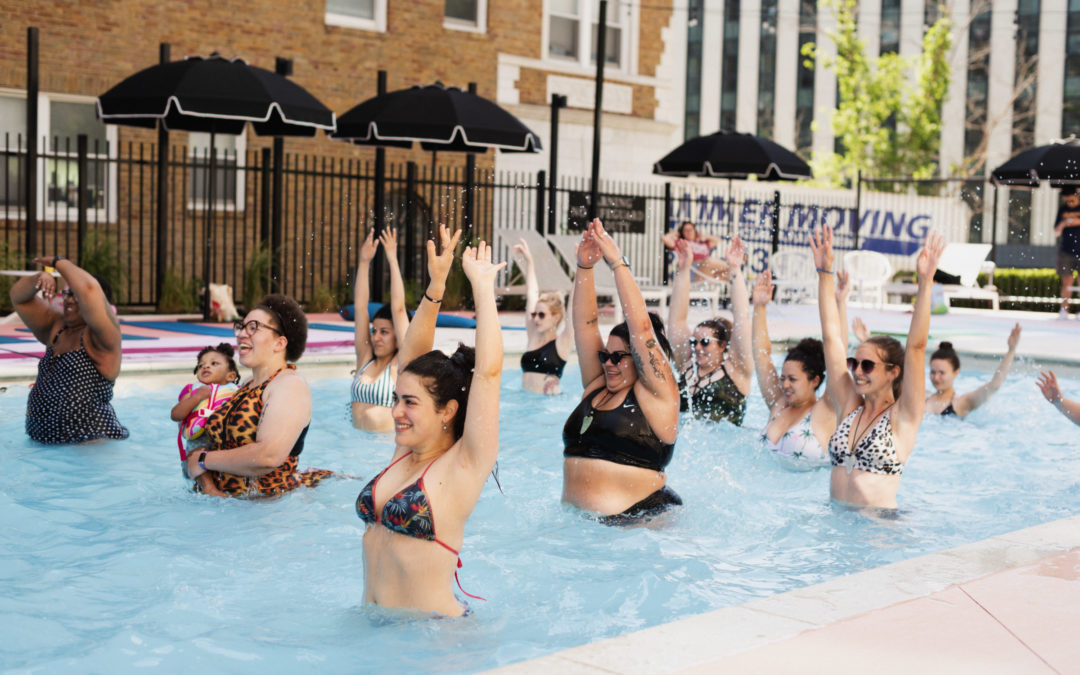IMPACT
Why Resident Connection Means More than The Latest Real Estate Fad
By
Chen Avni
– VOL. 8
When the owners finally unveiled the newly completed Park Santa Monica in Los Angeles, residents and industry-watchers alike were thrilled at the introduction of a shared outdoor space called The Farm, with a curated fruit and vegetable garden and family-style outdoor kitchen.
Similarly, industry leaders in Manhattan were buzzing when the new Maverick in New York’s Chelsea neighborhood introduced its imaginative list of amenities on offer, including the in-home sound bath, available with just a ring downstairs.
At Fifteen Hudson Yards, towering over Manhattan’s High Line park, the entire 50th floor is dedicated to a fitness center featuring spas for humans and dogs alike.
It’s safe to say that today’s buzziest luxury towers dominating the world’s most glamorous skylines are preoccupied with wellness. And rightfully so. As the indoor cigar lounge disappears in favor of a dial-up crystal concierge, developers seeking a competitive edge offer wellness experiences on par with some of the world’s dreamiest hotels. Gone are the days when residences were built to help inhabitants hustle hard. Now they’re helping residents say “Namaste.”

Over the last decade, exclusive access to luxury wellness spaces have become par for the course amenities at premium rental buildings.
and building spaces that promote the real, long-lasting health of residents and improve their end-to-end resident experience.
Even before the pandemic, researchers flagged loneliness as a major factor in chronic disease and mortality. It bumps up stress levels and depression, and realizes itself in the body with increased inflammation. Some have said it’s as bad for your health as smoking.
The antidote? Human connection.
“Close relationships, more than money or fame, are what keep people happy throughout their lives,” reported the Harvard Gazette. Last month, researchers flagged that 36% of Americans – and 61% of young Americans – reported feeling lonely “frequently” or “almost all the time or all the time” in the prior four weeks, compared with 25 percent who recalled experiencing serious issues in the two months prior to the pandemic.
Traditionally, luxury high-rises—the kind that can command big asking prices associated with desirable amenities like that yoga studio or spa-like service—were all about isolating residents from the masses. But that’s changing now that we are more aware of the importance of social connection, especially as we’re adjusting to the post-Covid world. The most coveted amenities are now all about fostering participation, with residents prioritizing healthy experiences that help people connect with each other.

Residents in Kansas City value their weekly water aerobics classes for the burned calories, and the chance to connect with other residents.
It’s about the interaction between public and private, buildings and neighborhoods, say experts like Eran Chen of ODA Architecture, who recently emphasized the importance of community living. At ODA, architects are focused on building spaces where residents can seamlessly move between their private residences and collective spaces focused on health, access to the outdoors, and one’s neighbors.
So, what does that mean for the real estate community? Suddenly, that rooftop garden seems a lot less indulgent. In fact, it can future-proof your organization. But the true differentiator is all about building real connections among people that improves their resident experience, and using a building’s spaces to do just that realized a boost to residents’ renewal decision-making. Venn recently reported that nearly 60% of all renters selected at least one neighborhood factor among their top three choices to renew. Savvy owner-operators are bringing that sense of community into their buildings. Whereas certain spaces can become fads, falling in and out of favor every few years or so, the feeling of community and truly fulfilling resident experience simply does not go out of style.

New residents in Kansas City come together for a rooftop party to welcome new faces to the community.
Rethinking a development as a space for resident participation is increasingly necessary for competitive real estate companies. While the more eye-popping offerings may always be relegated to the ultra-chic lofts of the rich and famous, it’s possible to do it at an accessible level. It’s all about health-focused offerings that give residents the chance to connect with each other.
From bicycle repair to dog-washing stations, forward-thinking communities are offering amenities that increase the health and wellbeing of all—even our four-legged friends.Produce boxes. Plant workshops. Poolside yoga. These offerings increase the value of a space. But they’re not enough. In order to truly increase asset value for buildings, real estate developers need to think about the resident experience and human connection that happens in these places. Ultimately, that’s where you can establish lasting and meaningful trust among residents. And in our experience, that leads to improved resident participation, boosting demand, retention, and resident satisfaction.
As inventive and colorful as some of those wellness trends may be, what’s more interesting and exciting for the future of real estate is prioritization of the resident experience and community connections. Because one thing that never goes out of style? Having a great community.
More from the Venn Journal







Recent Comments